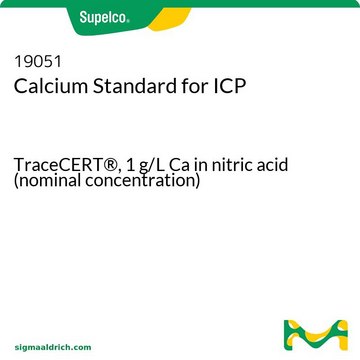134449
p-Xylene
ReagentPlus®, 99%
Sinónimos:
1,4-Dimethylbenzene
About This Item
Productos recomendados
densidad de vapor
3.7 (vs air)
Nivel de calidad
presión de vapor
9 mmHg ( 20 °C)
Línea del producto
ReagentPlus®
Ensayo
99%
Formulario
liquid
temp. de autoignición
984 °F
lim. expl.
7 %
técnicas
GC/MS: suitable
índice de refracción
n20/D 1.495 (lit.)
bp
138 °C (lit.)
mp
12-13 °C (lit.)
solubilidad
water: soluble 0.2 g/L
densidad
0.861 g/mL at 20 °C (lit.)
cadena SMILES
Cc1ccc(C)cc1
InChI
1S/C8H10/c1-7-3-5-8(2)6-4-7/h3-6H,1-2H3
Clave InChI
URLKBWYHVLBVBO-UHFFFAOYSA-N
¿Está buscando productos similares? Visita Guía de comparación de productos
Descripción general
Aplicación
p-xylene mayumb be used in the single drop microextraction of the corresponding organochlorine pesticides in vegetables, separated via gas chromatography(GC)coupled with mass spectrometry(MS).
Información legal
¿No encuentra el producto adecuado?
Pruebe nuestro Herramienta de selección de productos.
Palabra de señalización
Danger
Frases de peligro
Consejos de prudencia
Clasificaciones de peligro
Acute Tox. 4 Dermal - Acute Tox. 4 Inhalation - Aquatic Chronic 3 - Asp. Tox. 1 - Eye Irrit. 2 - Flam. Liq. 3 - Skin Irrit. 2 - STOT SE 3
Órganos de actuación
Respiratory system
Código de clase de almacenamiento
3 - Flammable liquids
Clase de riesgo para el agua (WGK)
WGK 2
Punto de inflamabilidad (°F)
80.6 °F - closed cup
Punto de inflamabilidad (°C)
27 °C - closed cup
Elija entre una de las versiones más recientes:
¿Ya tiene este producto?
Encuentre la documentación para los productos que ha comprado recientemente en la Biblioteca de documentos.
Nuestro equipo de científicos tiene experiencia en todas las áreas de investigación: Ciencias de la vida, Ciencia de los materiales, Síntesis química, Cromatografía, Analítica y muchas otras.
Póngase en contacto con el Servicio técnico







